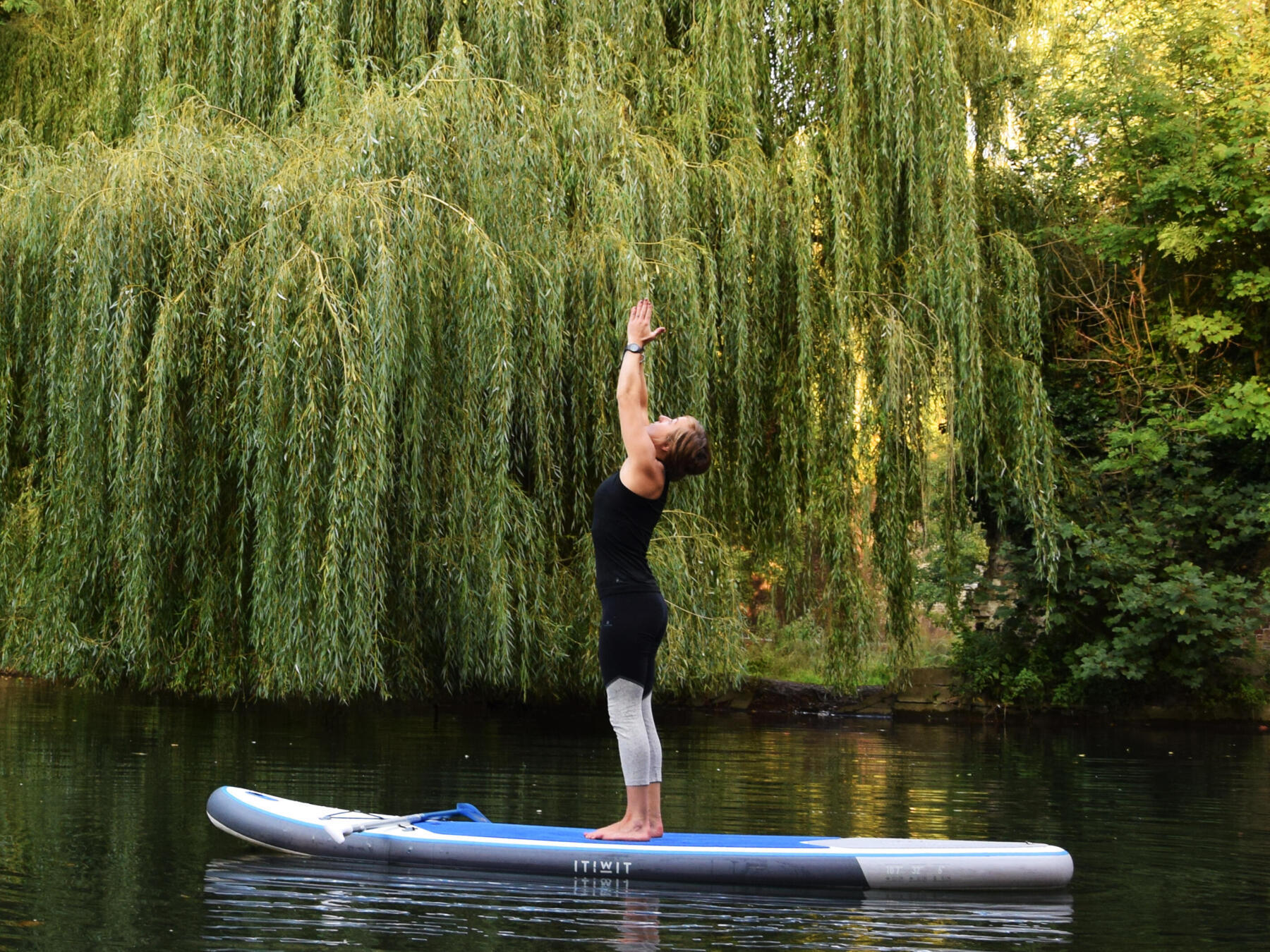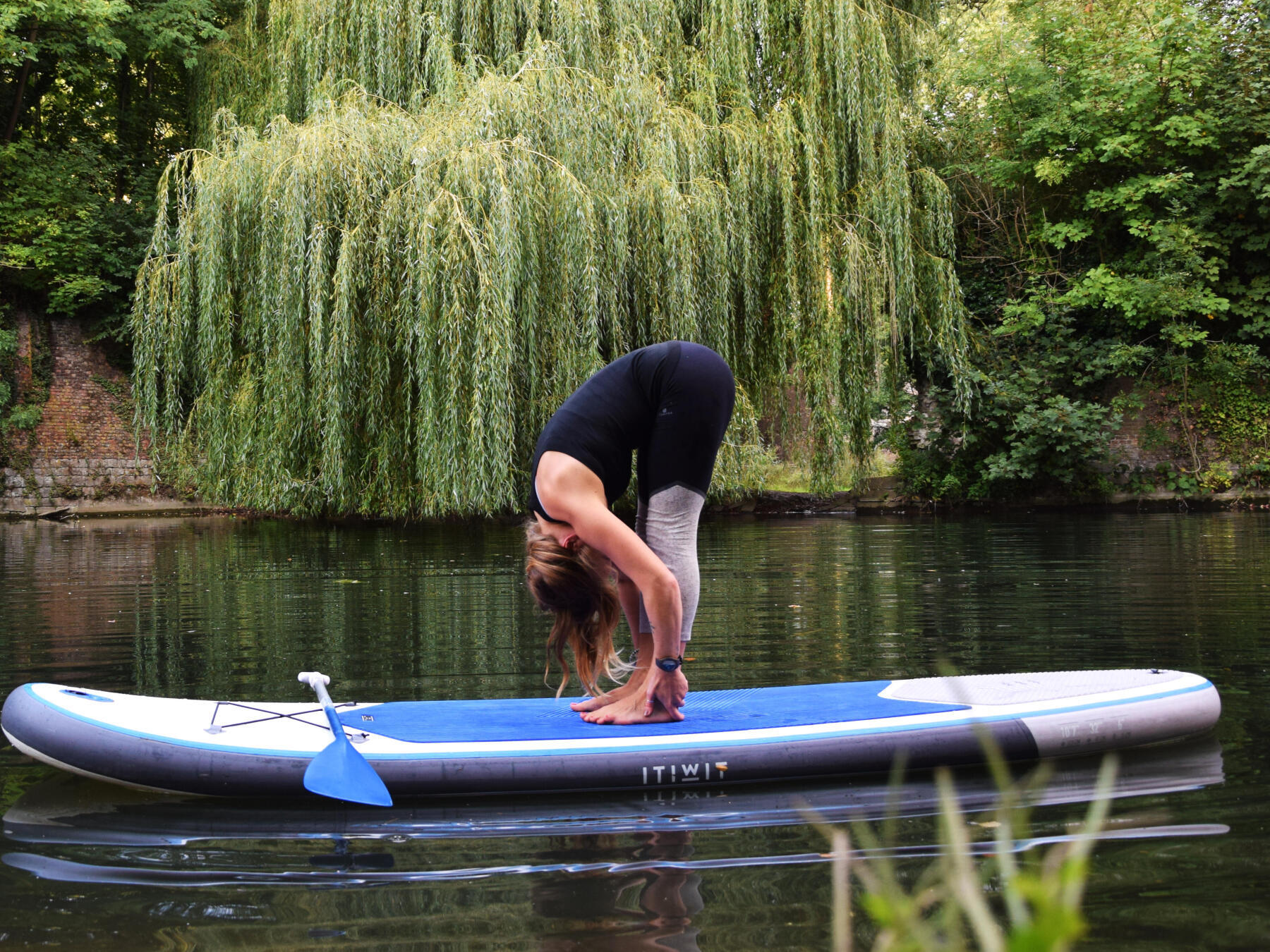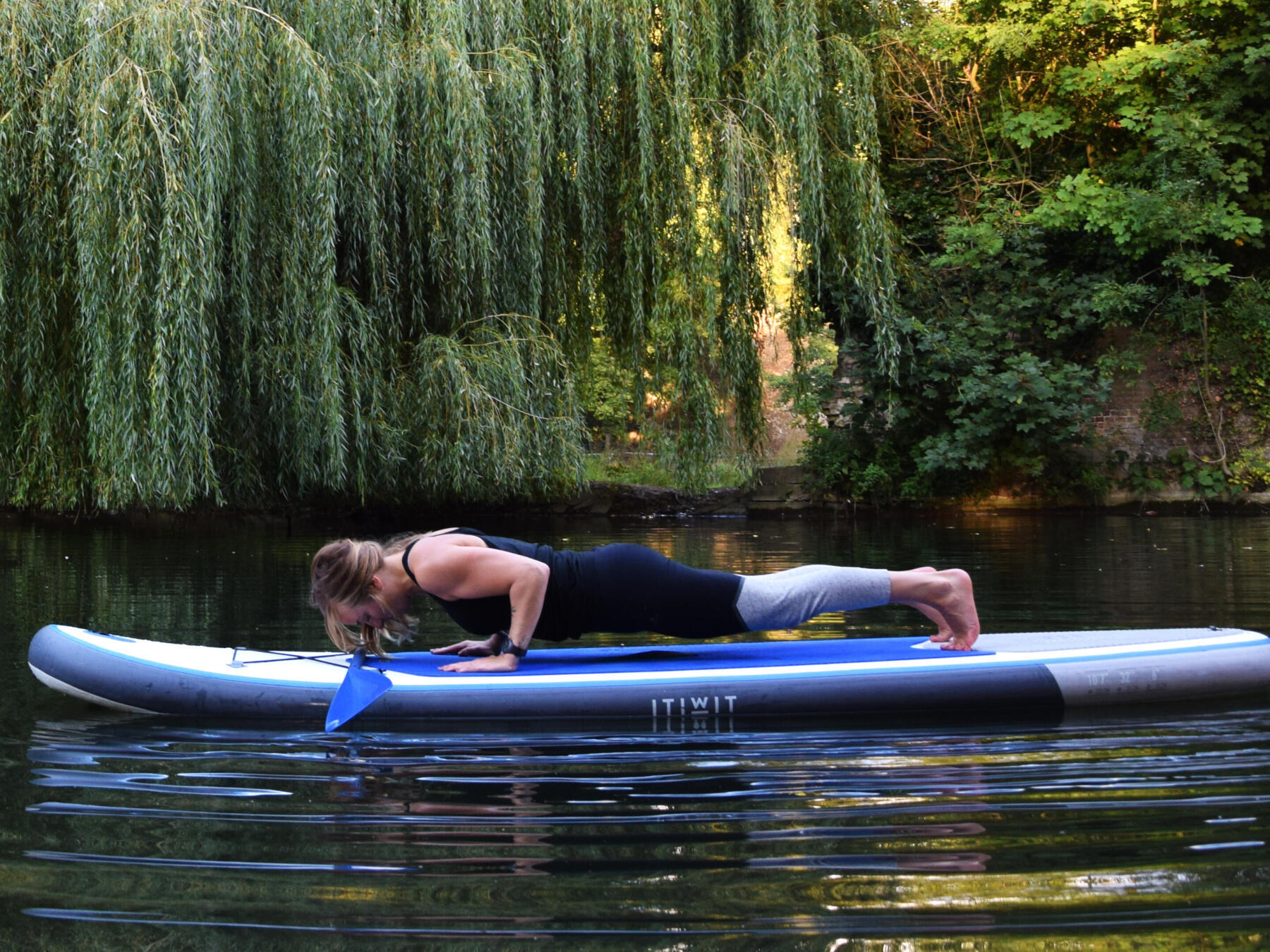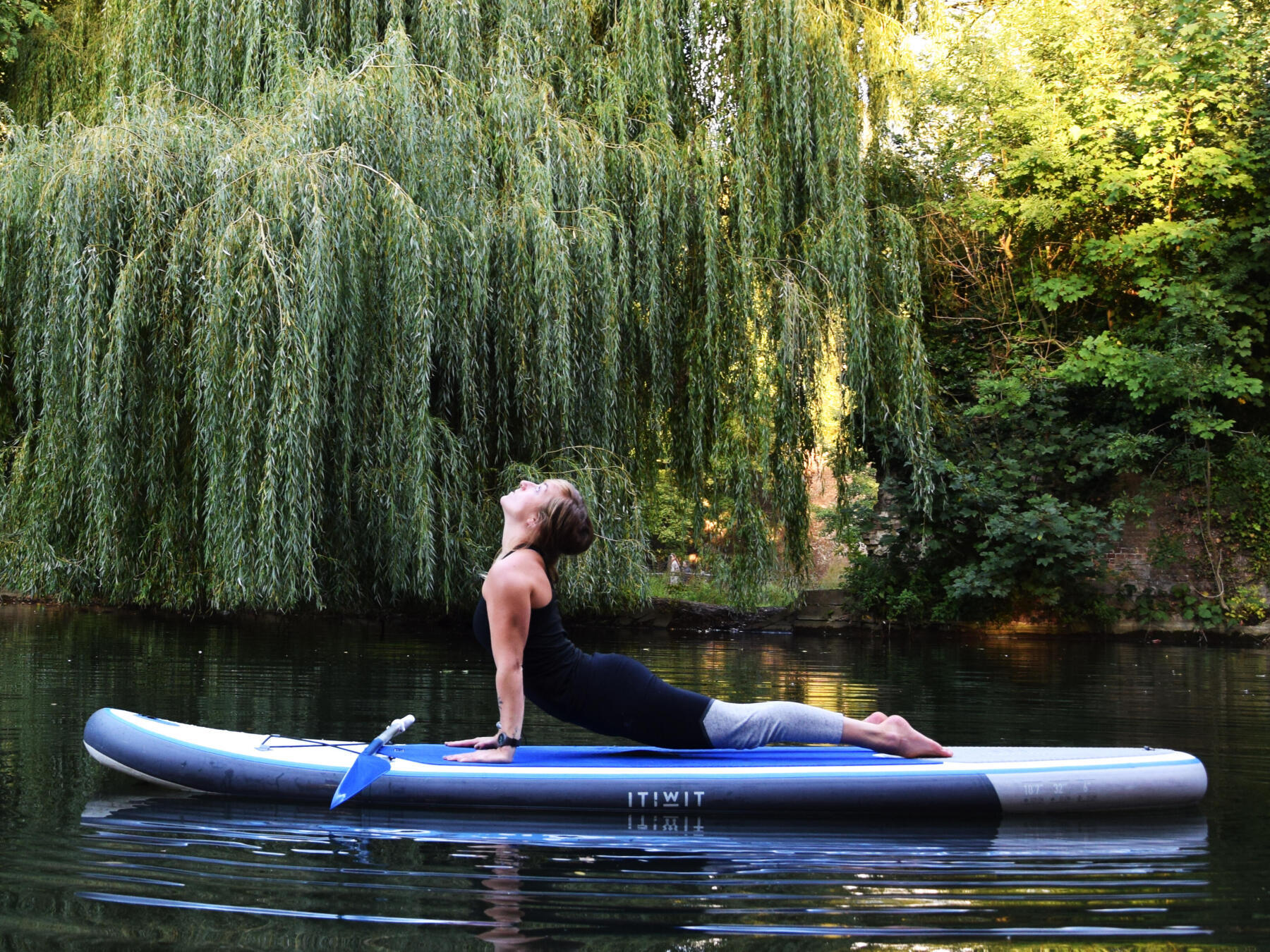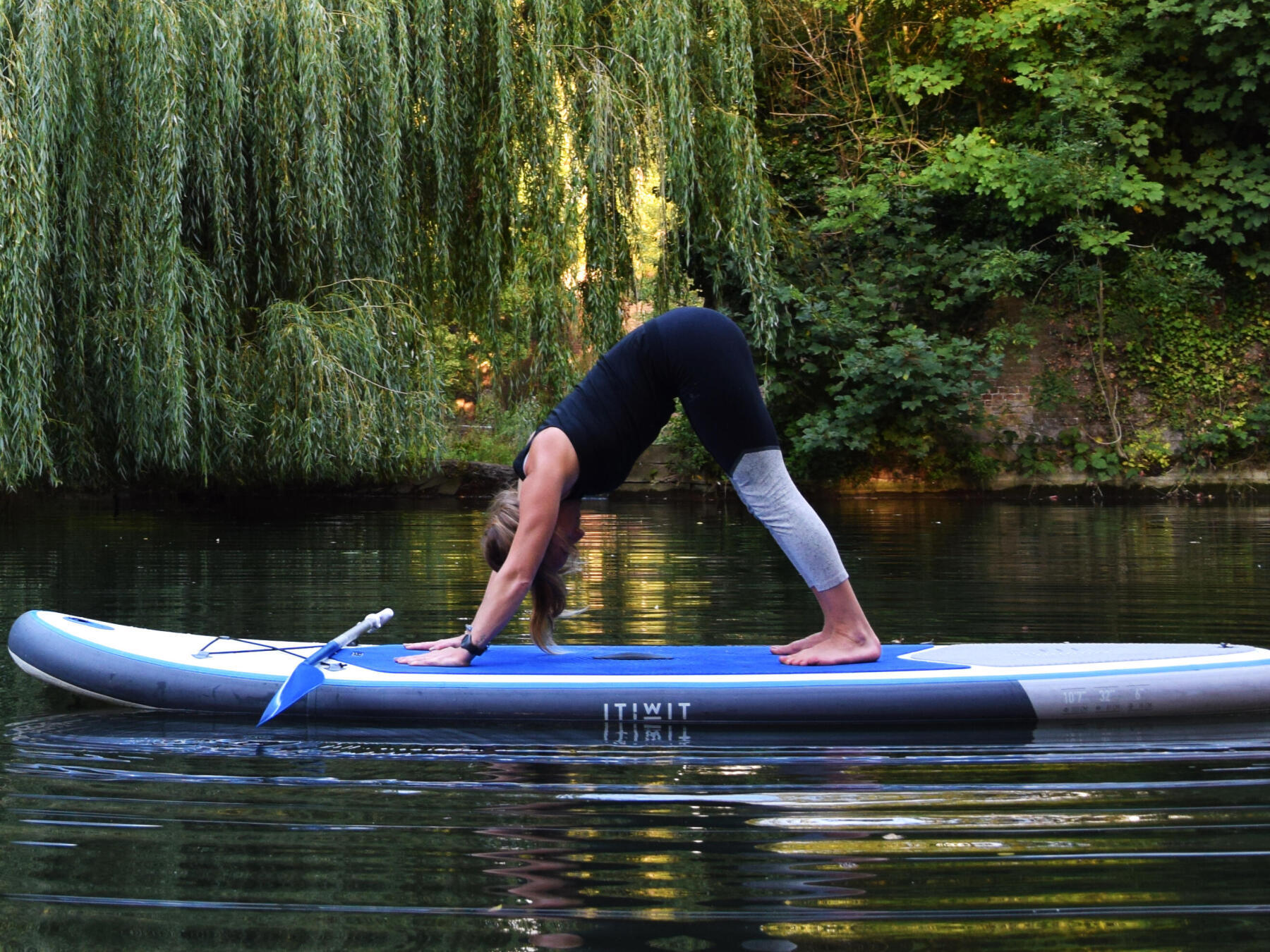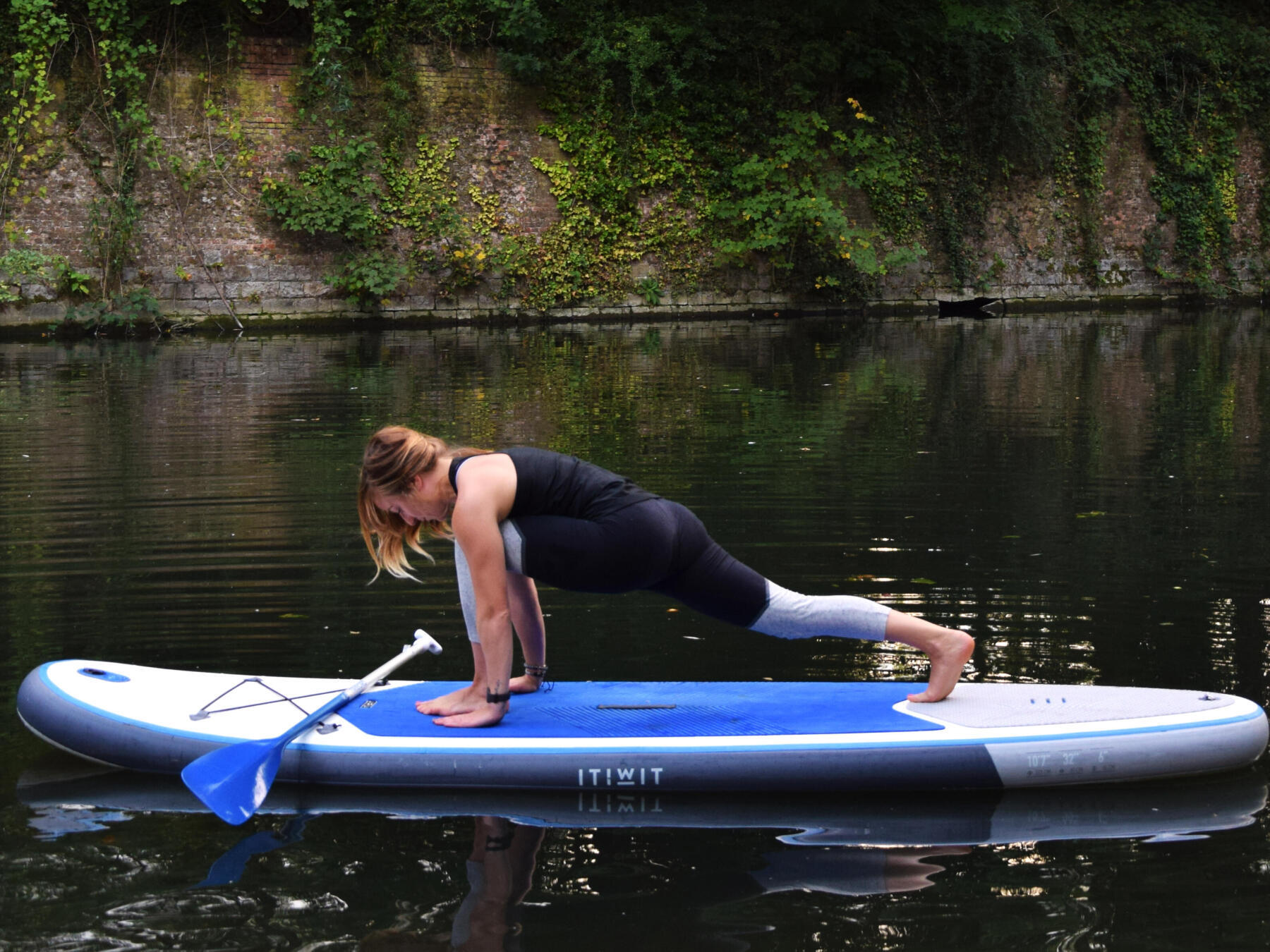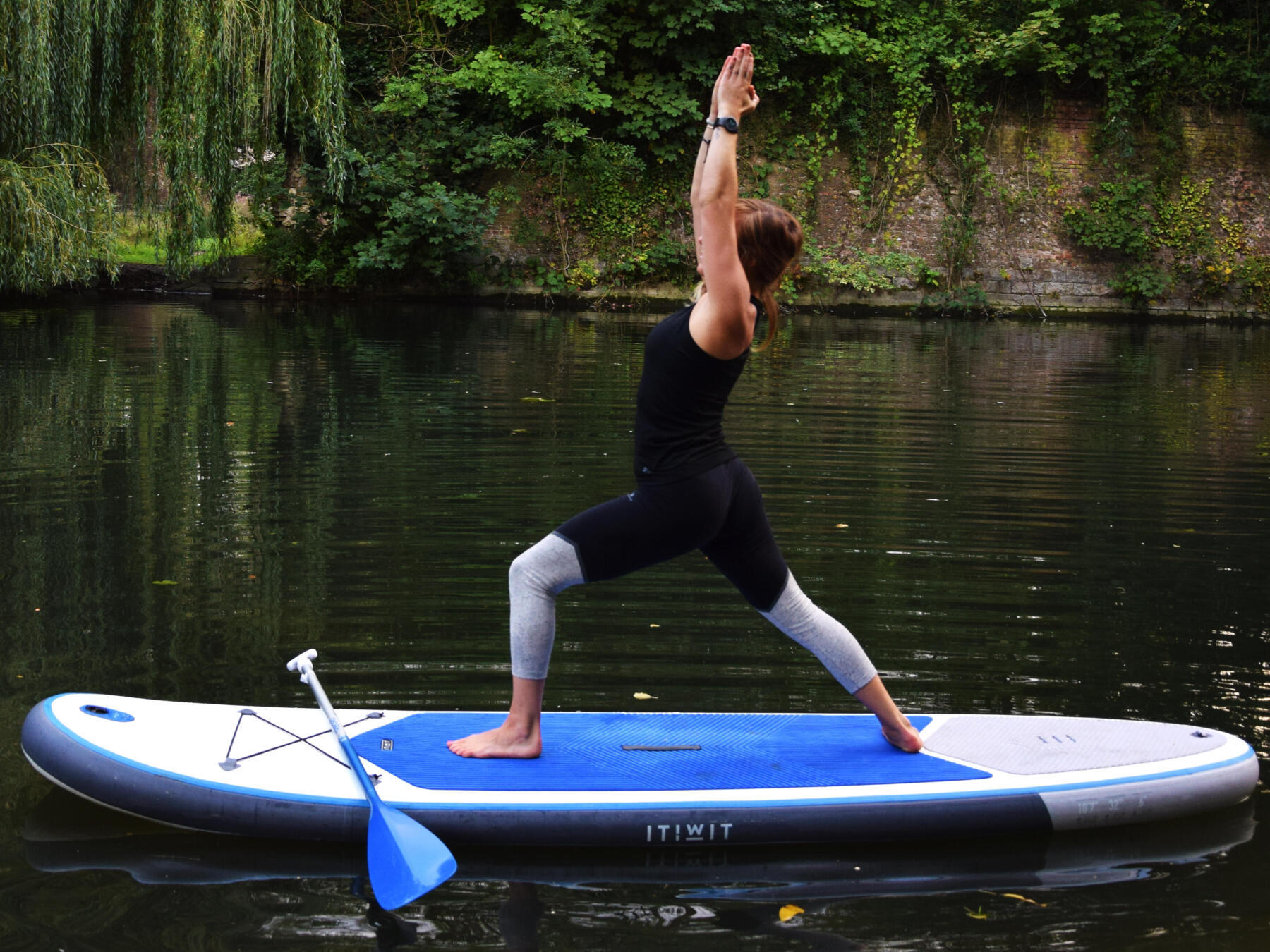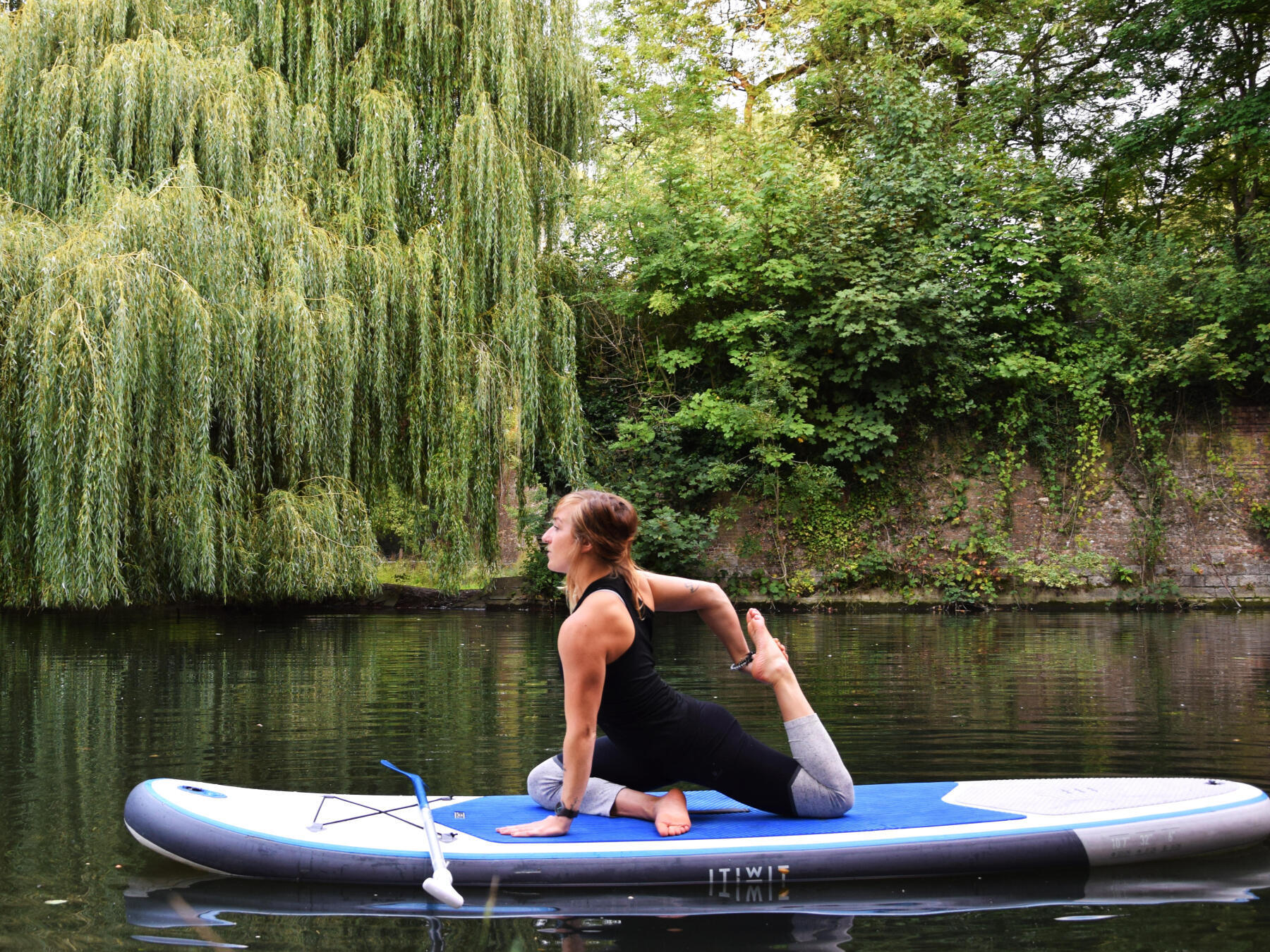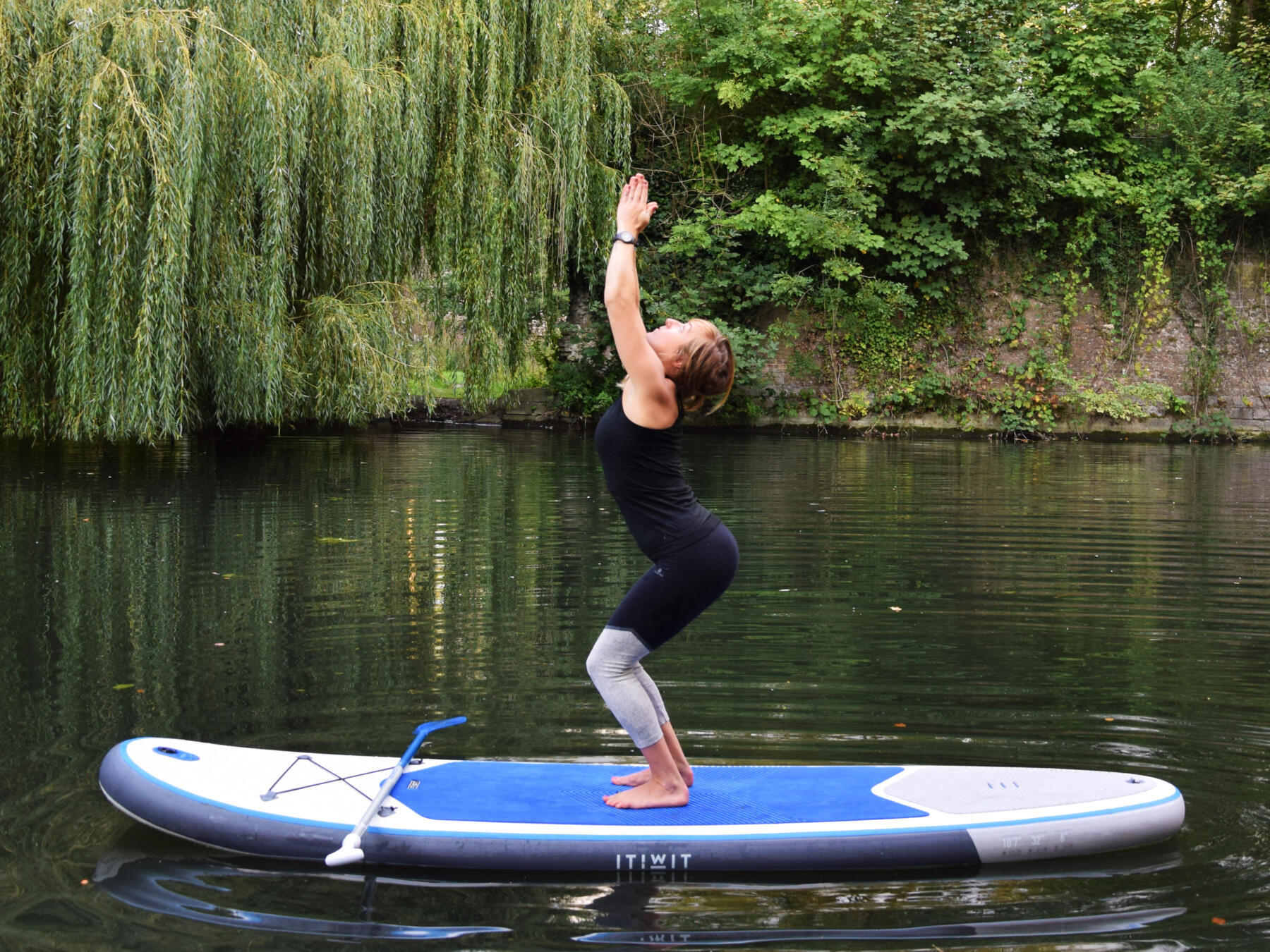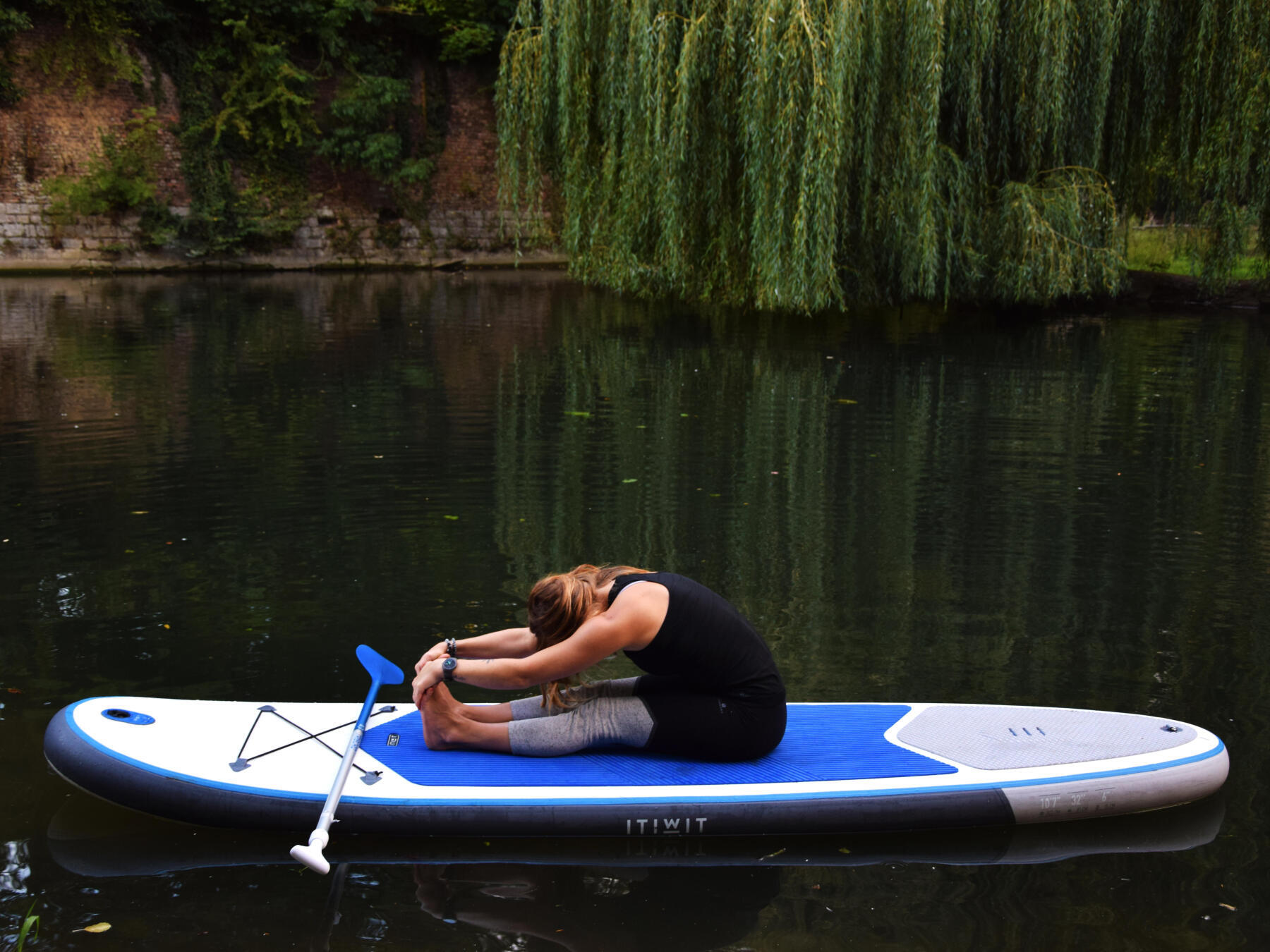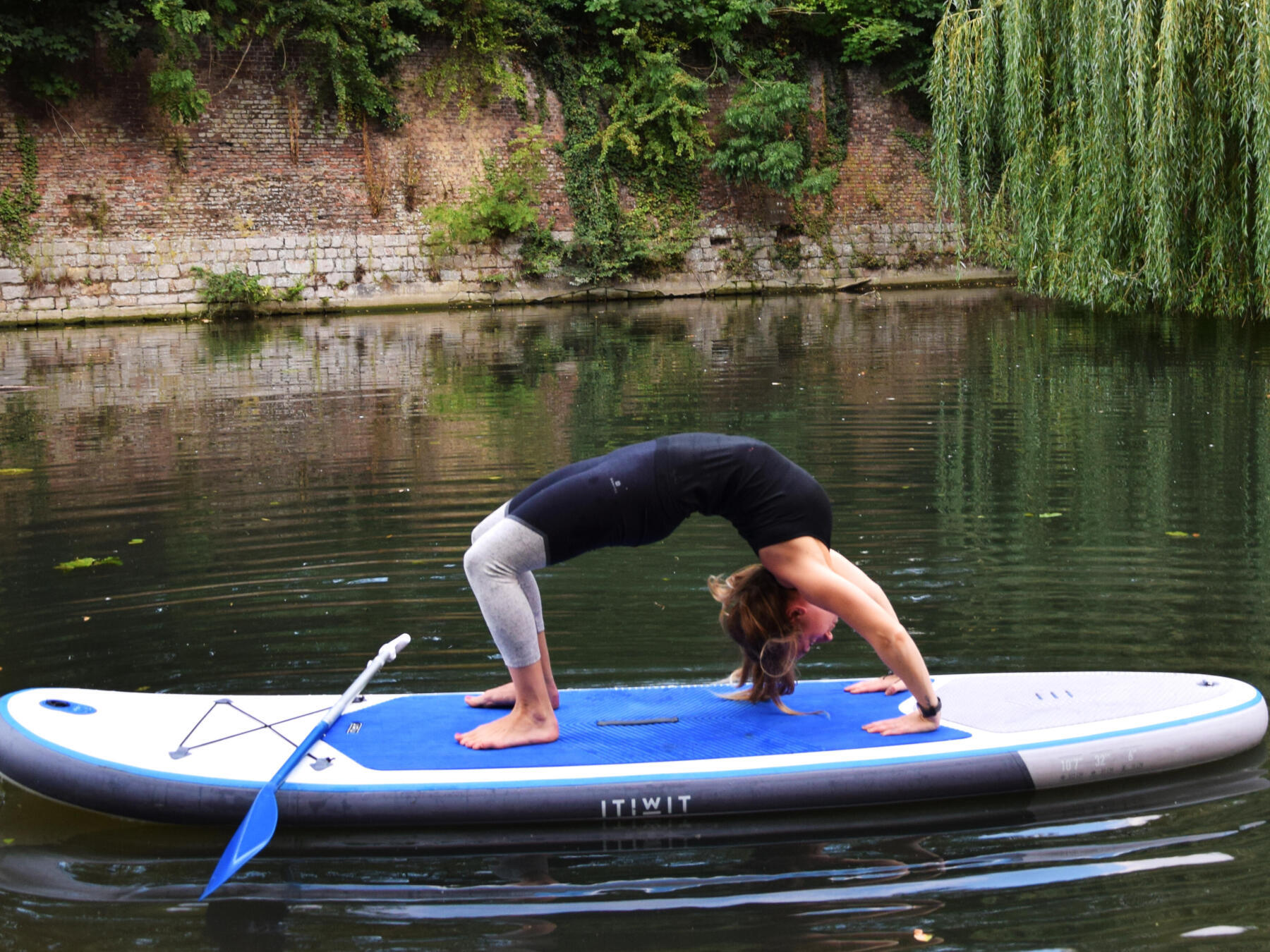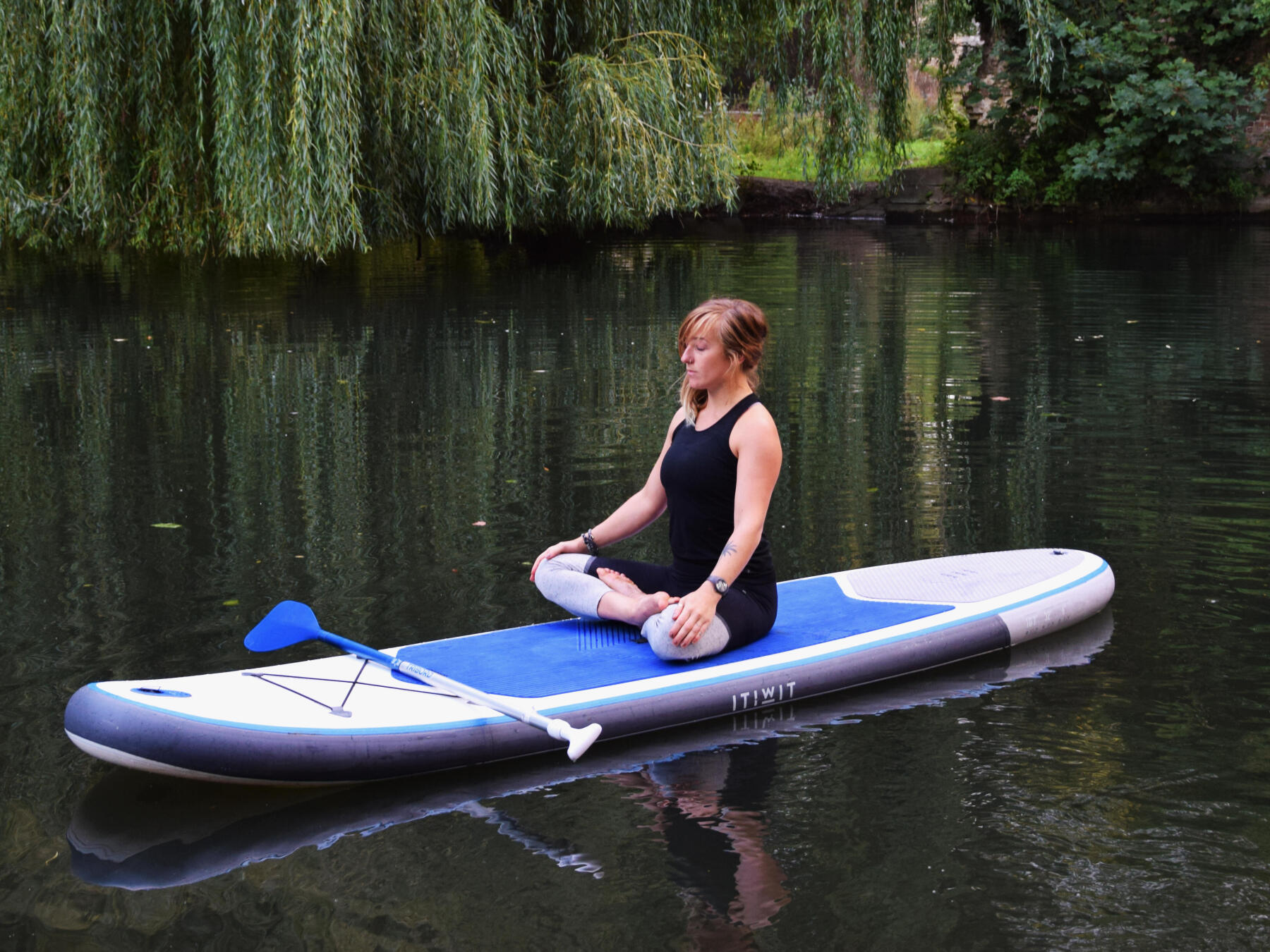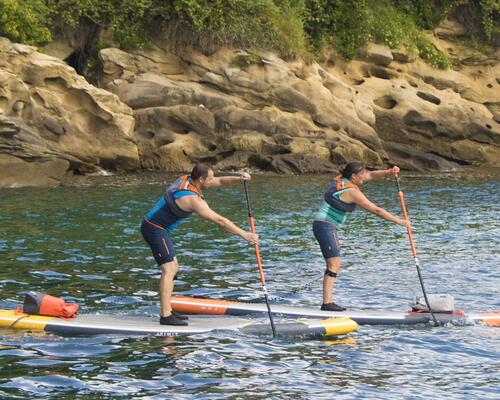Position 1- upward salute (urdhva hastasana)
As you inhale, bring your palms together above your head, arms outstretched alongside your ears and pointing towards the sky. Spread your shoulder blades apart. Allow your armpits to sink down as you keep raising your arms upwards. Lengthen the pose 75% towards the sky and 25% towards the back.
Benefits: combats fatigue, relieves back pain, eases low-level anxiety, and stretches the abs, armpits and shoulders.
Work on your balance with stand-up paddle boarding.

